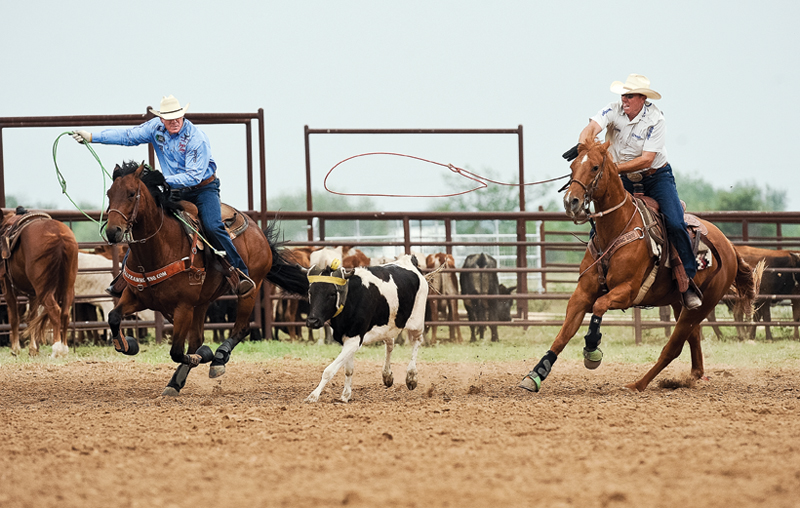Waving it off of small horns and splitting the horns on bigger steers are the two most common nightmares for headers. When I first started rodeoing and we roped big steers with great big horns out in California, I struggled with splitting the horns. Some of the steers were three, four, five years old, and they looked like Texas Longhorns to me. It was sort of a culture shock after roping in South Texas, where we roped small to medium horns. All the travel, long scores and big horns were a major adjustment for me in the beginning. But they weren’t going to change the conditions for me, so I had to adapt. I bought two sets of big horns to stick in a bale of hay, and roped those things day and night until I got them figured out. One set is flat, and the other is big based and curls up. I still have them. They’re sort of like my favorite old trophies hanging in my tack room.
[Shop: Jake Barnes Ropes and Gear]
(As an Amazon Associate, we earn from qualifying purchases made through affiliate links.)
Occasionally someone will come by my place and pop off, and it’s kind of funny watching them try to rope them. Those horns taught me how to keep my loop open on big horns.
Generally speaking, people think they split the horns because they don’t follow through. People also say they dropped their elbow or shoulder, and that caused it. Another explanation people often use for splitting the horns is that their horse gets too close.
Splitting the horns is a miss, and we always need to figure out why we missed. My theory on why it happens is that you roll your thumb down too much and too early, which forces the top strand too early at a downward angle.
In a normal catch, the bottom of your loop is going to go under the right horn and your top strand is going to go over the top of the left horn. So if you drop your shoulder or create too steep of an angle on your delivery then it’s going to force the top strand of the loop toward the base of the left horn and wrap under the left horn—and split the horns.
What I do when I rope cattle with bigger horns is use a rope that’s a little stiffer and has a little more body to it, so I can keep my loop open. I want to ride my position a touch wider—about a foot wider—so I’m not in as tight on a bigger-horned steer.
I want to open up my swing a little and keep my loop a little flatter. I’m still trying to get a curl, but I’m being a little bit more deliberate with my delivery to keep that loop open. I want to get my loop around both of those horns at the same time. I want to make sure that when I come down into that delivery that I open up my loop and extend my arm far enough that I put that top strand over that left horn. I’m more aware of my delivery on big horned steers than small horned steers.
You have to analyze your roping and know where your weaknesses are. I had a weakness in roping big horns, so I got a couple sets of big horns and roped them night and day from every position—from too close to being able to reach on them. And I bought steers with bigger horns to practice on, too. I got to where I had confidence on all different kinds of horns. I encourage everyone to work the most on your weaknesses, whether it’s scoring, roping fast or whatever else. I preferred roping smaller horns in the beginning, because that’s what I was used to. But I worked at it until I got comfortable with them all. Cattle with bigger horns are fewer and further between than they used to be, but occasionally a stock contractor will bring in bigger cattle. We need to be ready for whatever they run in there.











